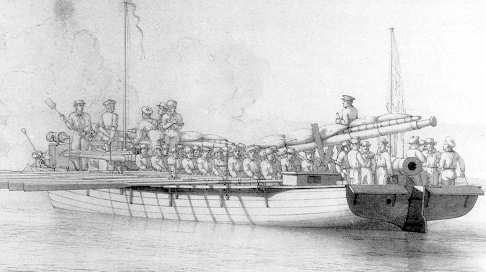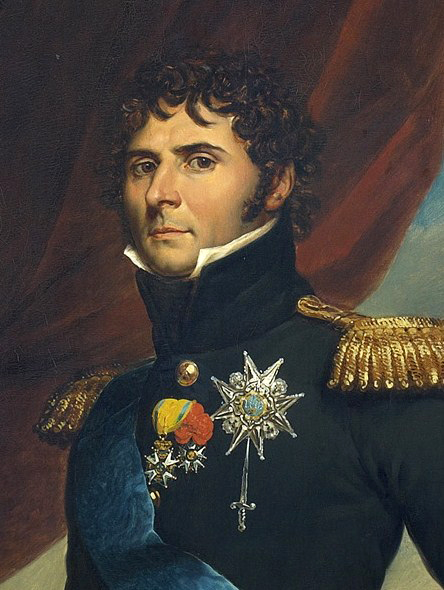|
Battle Of Lyngør
The Battle of Lyngør was a naval action fought between Denmark-Norway and the United Kingdom in 1812 on the southern coast of Norway. The battle ended in a Dano-Norwegian defeat, and marked the end of the Kingdom of Denmark-Norway's involvement in the Napoleonic Wars. Background Denmark-Norway's attempt to remain neutral in the struggle between France and the United Kingdom and their respective allies early in the 19th century came to an end after the United Kingdom's pre-emptive naval actions of 1807, in which the entire Danish fleet was captured, the British operating under the possibility that Denmark-Norway was planning to join the Napoleonic Wars on the side of the French. The British imposed a blockade on supply lines between Norway and Denmark in the Skagerrak sound, except for Norwegian ships transporting lumber bound for Britain. The resulting blockade isolated Norway from both Denmark and from the market and economically impacted Norway. Most exports were stopped, as w ... [...More Info...] [...Related Items...] OR: [Wikipedia] [Google] [Baidu] |
Gunboat War
The Gunboat War (, ; 1807–1814) was a naval conflict between Denmark–Norway and the British during the Napoleonic Wars. The war's name is derived from the Danish tactic of employing small gunboats against the materially superior Royal Navy. In Scandinavia it is seen as the later stage of the English Wars, whose commencement is accounted as the First Battle of Copenhagen in 1801. Background The naval conflict between Britain and Denmark-Norway commenced with the First Battle of Copenhagen in 1801 when Horatio Nelson's squadron of Admiral Parker's fleet attacked the Danish capital. This came as a basis of Denmark-Norway's policy of armed neutrality during the latter stages of the French Revolutionary Wars, where Denmark used its naval forces to protect trade flowing within, into and out of the Danish-Norwegian waters. Hostilities between Denmark-Norway and the United Kingdom broke out again by the Second Battle of Copenhagen in 1807, when the British attacked the Danish c ... [...More Info...] [...Related Items...] OR: [Wikipedia] [Google] [Baidu] |
Tvedestrand
is municipality in Agder county, Norway. It is located in the traditional district of Sørlandet. The administrative center is the town of Tvedestrand. There are many villages in the municipality including Dypvåg, Fiane, Gjeving, Gødderstad, Grønland, Kilen, Klåholmen, Krokvåg, Laget, Lyngør, Nesgrenda, Østerå, Sagesund, Sandvika, and Songe. The town of Tvedestrand has a white-painted town center with irregular streets climbing steep hills around the harbor. The natural environment of the area makes it a tourist destination. The municipality includes numerous islands, which makes it popular in the summer for boaters. The number of people in the municipality practically doubles in the summer, due to vacationers. There are approximately 1,700 summer cottages ("hytter") around the fjord and coastal areas. Tvedestrand has over 2,000 buildings that are more than 100 years old. The municipality is the 298th largest by area out of the 356 municipalities in Norway. Tv ... [...More Info...] [...Related Items...] OR: [Wikipedia] [Google] [Baidu] |
1812 In Denmark
Events from the year 1812 in Denmark. Incumbents * Monarch – Frederick VI * Prime minister – Frederik Moltke Events Undated * Andreas Marschall establishes a piano factory in Copenhagen. Births * 25 February – Carl Christian Hall, politician, Danish prime minister (died 1888) * 8 March – Louis Gurlitt, painter (died 1897) * 24 March – Carl Dahl, painter (died 1865) * 25 May – Thorald Brendstrup, painter (died 1883) * 29 August – Adolph Peter Adler, theologian (died 1869) * 22 November – Johanne Luise Heiberg, actress (died 1890) * 24 December Carl Balsgaard, painter (died 1893) Deaths * 16 January – Pierre Peschier, merchant (born 1830) * 21 September Poul Skibsted, lawyer (born 1753) * 26 October – Hans Peter Holm, naval officer (born 1772) References {{DEFAULTSORT:1812 In Denmark 1810s in Denmark Denmark ) , song = ( en, "King Christian stood by the lofty mast") , song_type = National and royal anthem , image_map = EU-D ... [...More Info...] [...Related Items...] OR: [Wikipedia] [Google] [Baidu] |
1812 In Norway
Events in the year 1812 in Norway. Incumbents *Monarch: Frederick VI . Events *6 July – In the Battle of Lyngør, the Danish-Norwegian frigate was sunk by the British ships and . Arts and literature *Grøndahl & Søn Forlag publishing house, was established. Births *6 January – Knud Knudsen, linguist (d.1895). *15 January – Peter Christen Asbjørnsen, writer and scholar (d.1885). *26 January – Andreas Grimelund, bishop (d.1896) *1 March – Iver Steen Thomle, jurist (d.1889) *28 November – Ludvig Mathias Lindeman, composer and organist (d.1887) *11 December – Jørgen Tandberg Ebbesen, politician (d.1887) Full date unknown * Hans Jensen Blom, politician (d.1875) *Nils Elias Børresen, politician * Christian Hansen Vennemoe, politician * Torbjørg Utne, hotelier (died 1903). Deaths *26 October – Hans Peter Holm, naval officer (b. 1772 Events January–March * January 10 – Shah Alam II, the Mughal Emperor of India, makes a triumphant re ... [...More Info...] [...Related Items...] OR: [Wikipedia] [Google] [Baidu] |
Battles Of The Gunboat War
A battle is an occurrence of combat in warfare between opposing military units of any number or size. A war usually consists of multiple battles. In general, a battle is a military engagement that is well defined in duration, area, and force commitment. An engagement with only limited commitment between the forces and without decisive results is sometimes called a skirmish. The word "battle" can also be used infrequently to refer to an entire operational campaign, although this usage greatly diverges from its conventional or customary meaning. Generally, the word "battle" is used for such campaigns if referring to a protracted combat encounter in which either one or both of the combatants had the same methods, resources, and strategic objectives throughout the encounter. Some prominent examples of this would be the Battle of the Atlantic, Battle of Britain, and Battle of Stalingrad, all in World War II. Wars and military campaigns are guided by military strategy, wherea ... [...More Info...] [...Related Items...] OR: [Wikipedia] [Google] [Baidu] |
Constitution Of Norway
nb, Kongeriket Norges Grunnlov nn, Kongeriket Noregs Grunnlov , jurisdiction =Kingdom of Norway , date_created =10 April - 16 May 1814 , date_ratified =16 May 1814 , system =Constitutional monarchy , branches = Judicial, Executive, and Legislative , chambers =Unicameral , executive =Prime Minister , courts = Supreme court, Court of impeachment, and subordinate courts , federalism =No , electoral_college =No , date_legislature =7 October 1814 , citation = , location_of_document = Storting , writer =Norwegian Constituent Assembly , head_of_state=Monarchy of Norway , supersedes=King's Law (Lex Regia) , wikisource = Constitution of Norway The Constitution of Norway (complete name: The Constitution of the Kingdom of Norway; Danish: ; Norwegian Bokmål: ; Norwegian Nynorsk: ) was adopted on 16 May and signed on 17 May 1814 by the ... [...More Info...] [...Related Items...] OR: [Wikipedia] [Google] [Baidu] |
Storting
The Storting ( no, Stortinget ) (lit. the Great Thing) is the supreme legislature of Norway, established in 1814 by the Constitution of Norway. It is located in Oslo. The unicameral parliament has 169 members and is elected every four years based on party-list proportional representation in nineteen multi-seat constituencies. A member of Stortinget is known in Norwegian as a ''stortingsrepresentant'', literally "Storting representative". The assembly is led by a president and, since 2009, five vice presidents: the presidium. The members are allocated to twelve standing committees as well as four procedural committees. Three ombudsmen are directly subordinate to parliament: the Parliamentary Intelligence Oversight Committee and the Office of the Auditor General. Parliamentarianism was established in 1884, with the Storting operating a form of "qualified unicameralism", in which it divided its membership into two internal chambers making Norway a de facto bicameral parliament ... [...More Info...] [...Related Items...] OR: [Wikipedia] [Google] [Baidu] |
Treaty Of Kiel
The Treaty of Kiel ( da, Kieltraktaten) or Peace of Kiel (Swedish and no, Kielfreden or ') was concluded between the United Kingdom of Great Britain and Ireland and the Kingdom of Sweden on one side and the Kingdoms of Denmark and Norway on the other side on 14 January 1814 in Kiel.Schäfer (2002), p. 137 It ended the hostilities between the parties in the ongoing Napoleonic Wars, where the United Kingdom and Sweden were part of the anti-French camp (the Sixth Coalition) while Denmark–Norway was allied to France. Frederick VI of Denmark joined the anti-French alliance, ceded Heligoland to George III of the United Kingdom, and further ceded the Kingdom of Norway to Charles XIII of Sweden in return for Swedish Pomerania. Specifically excluded from the exchange were the Norwegian dependencies of Greenland, Iceland and the Faroe Islands, which remained in the union with Denmark. (Norway would unsuccessfully contest the Danish claim to all of Greenland in the Eastern Greenland Case ... [...More Info...] [...Related Items...] OR: [Wikipedia] [Google] [Baidu] |
Naval General Service Medal (1847)
__NOTOC__ The Naval General Service Medal (NGSM) was a campaign medal approved in 1847, and issued to officers and men of the Royal Navy in 1849. The final date for submitting claims was 1 May 1851.British Battles and Medals, page 34. Admiral Thomas Bladen Capel was one of the members of the board that authorised the medal. The NGSM was awarded retrospectively for various naval actions during the period 1793–1840, a period that included the French Revolutionary Wars, the Napoleonic Wars and the Anglo-American War of 1812. Each battle or campaign covered by the medal was represented by a clasp on the ribbon. The medal was never issued without a clasp, 231 of which were sanctioned.British Battles and Medals, page 33. The clasps covered a variety of actions, from boat service, ship to ship skirmishes, to major fleet actions such as the Battle of Trafalgar. This medal and its army counterpart, the Military General Service Medal, were amongst the first real British campaign medals, ... [...More Info...] [...Related Items...] OR: [Wikipedia] [Google] [Baidu] |
Post-captain
Post-captain is an obsolete alternative form of the rank of Captain (Royal Navy), captain in the Royal Navy. The term served to distinguish those who were captains by rank from: * Officers in command of a naval vessel, who were (and still are) addressed as captain regardless of rank; * Commander (Royal Navy), Commanders, who received the title of captain as a courtesy, whether they currently had a command or not (e.g. the fictional Captain Jack Aubrey in ''Aubrey-Maturin series#Master and Commander, Master and Commander'' or the fictional Captain Horatio Hornblower in ''Hornblower and the Hotspur''); this custom is now defunct. In the Royal Navy of the 18th and 19th centuries, an officer might be promoted from commander to captain, but not have a command. Until the officer obtained a command, he was "on the beach" and on half-pay. An officer "took post" or was "made post" when he was first commissioned to command a vessel. Usually this was a rating system of the Royal Navy, ra ... [...More Info...] [...Related Items...] OR: [Wikipedia] [Google] [Baidu] |







.jpg)
